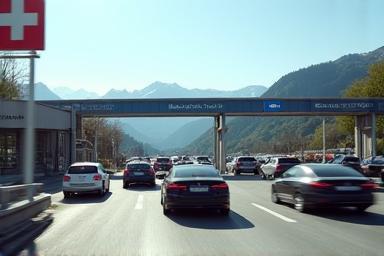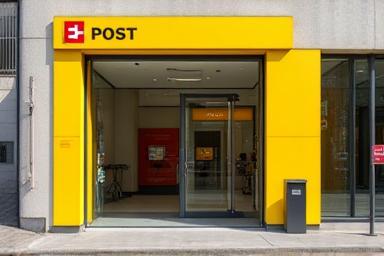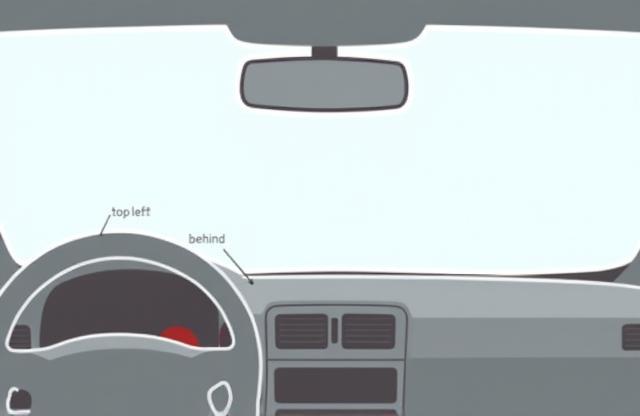Your Essential Guide to the Swiss Motorway Vignette
Navigating the scenic routes and efficient motorways of Switzerland is a highlight for many travelers, but it comes with a crucial requirement: the motorway vignette. This small sticker, or its modern digital equivalent, is your mandatory pass to use the national motorway network for vehicles under 3.5 tons. Without it, you risk significant fines that can quickly dampen the spirit of your Swiss adventure. Our comprehensive guide is meticulously crafted to provide you with all the indispensable information you need. We cover everything from the fundamental purpose of the vignette and who needs one, to the various purchase options available (both physical and digital), precise instructions on correct placement, and vital details about its validity. Whether you're planning a short trip, a business visit, or an extended tour, ensuring you have a valid vignette and understand the associated rules is key to a smooth, stress-free journey. This guide aims to demystify the process, saving you time, potential fines, and ensuring you can focus on enjoying the breathtaking Swiss landscapes.
Explore the Guide
What Exactly is the Swiss Motorway Vignette?
At its core, the Swiss motorway vignette is an official toll system implemented as a sticker or digital record, granting permission for private vehicles weighing up to 3.5 tons to utilize the country's network of national motorways (known variously as Autobahn, Autoroute, or Autostrada depending on the linguistic region). This requirement is strictly mandatory for all vehicles, including passenger cars, motorcycles, and even trailers, irrespective of whether the vehicle is registered in Switzerland or abroad, and regardless of how brief the planned stay is. Unlike many other toll systems that charge per kilometer or per passage through tunnels/bridges, the Swiss vignette operates on a flat annual fee basis, providing unlimited access to the network during its validity period. The funds collected through the sale of vignettes are exclusively allocated towards the ongoing expansion, maintenance, and operational costs of the national road infrastructure, ensuring the high quality and efficiency for which Swiss motorways are renowned. It's a simple yet effective system designed to ensure fair contribution from all users of the network. Failure to display a valid physical vignette correctly or to possess a valid digital vignette registration when using a Swiss motorway is not merely a minor oversight; it is a regulatory violation that carries significant penalties.

Understanding this fundamental requirement is the first step towards compliant and worry-free travel across Switzerland's well-maintained road network. It's not just about paying a fee; it's about contributing to and participating in a system that benefits all road users by funding essential infrastructure.
Why Understanding the Vignette is Crucial for Your Trip

Avoid Heavy Fines
One of the most immediate and significant reasons to be informed about the vignette is to steer clear of costly penalties. Swiss authorities rigorously check for valid vignettes, both through visible checks at borders and by mobile police patrols or automated systems on motorways. If you are found driving on a mandatory vignette road without the correct documentation, you face an on-the-spot fine of CHF 200. Adding insult to injury, you will also be required to purchase a valid CHF 40 vignette right then and there, bringing the total minimum cost of non-compliance to CHF 240. This far exceeds the CHF 40 cost of the vignette itself and can put a considerable dent in your travel budget.

Smooth, Uninterrupted Travel
Possessing a valid vignette ensures that your journey through Switzerland's world-class motorway network is as seamless and efficient as intended. Without a vignette, you might be forced to navigate slower, non-vignette roads, potentially adding significant time and complexity to your route. While scenic, these alternative routes are not designed for long-distance travel and can be less direct. Furthermore, being stopped at a border crossing or by a patrol for a vignette check can cause delays. Having your vignette properly acquired and affixed (or digitally registered) allows you to confidently utilize the fast, well-maintained motorways, ensuring you reach your destination smoothly and without unexpected stops or detours related to compliance issues.

Legal Compliance & Peace of Mind
Adhering to the local regulations is a fundamental part of responsible travel in any country. For drivers in Switzerland, this includes the vignette requirement. Knowing that you are fully compliant with Swiss traffic laws provides invaluable peace of mind. You can relax and dedicate your full attention to navigating safely and soaking in the stunning alpine panoramas and picturesque valleys that Switzerland offers. Avoid the anxiety of potential checks or fines. Being informed and prepared ensures that your focus remains on enjoying the exceptional driving experience and the beautiful surroundings, making your visit truly memorable for all the right reasons.
Vignette Types and Validity
Navigating the options for the Swiss motorway vignette is straightforward because, unlike many other countries with varied toll durations, Switzerland keeps it simple. Currently, the system offers primarily one standard type of vignette: the annual vignette. While termed 'annual', its period of validity is notably generous, spanning more than a calendar year. A vignette for a specific year, for example, the 2024 vignette, becomes valid much earlier than January 1st of that year. Its validity commences on December 1st of the preceding year (December 1, 2023, for a 2024 vignette) and extends until January 31st of the year immediately following the imprinted year (January 31, 2025, for a 2024 vignette). This provides a 14-month window of validity, covering the entirety of the calendar year and parts of the adjacent ones, offering flexibility for those travelling around the year-end. It is critical to understand that this annual vignette is the *only* standard option available for private vehicles under 3.5 tons requiring motorway access. There are no official shorter-term vignettes, such as daily, weekly, or monthly passes. This means that even if your planned stay or use of Swiss motorways is just for a single day or a week, you are required to purchase the full annual vignette. Planning for this cost is an essential part of preparing your budget for a trip involving Swiss motorway travel, no matter the duration.

Where Can You Buy the Vignette?
Securing your Swiss motorway vignette is a straightforward process, with several convenient and official purchase points available. Whether you prefer the traditional physical sticker or the modern digital version, you have options to ensure you're compliant before hitting the motorways.

Border Crossings
For many international travelers, purchasing the vignette directly upon entering Switzerland is the most practical approach. You can buy the physical sticker at most major Swiss border crossings at the customs offices. This is a quick and reliable way to ensure compliance right from the start of your journey on Swiss roads.

Post Offices
Within Switzerland, the physical vignette is readily available at branches of the Swiss Post (Die Post, La Poste, La Posta). This offers a widespread network of purchase locations across the country, convenient if you arrive without a vignette or need to purchase one during your stay before using motorways.

Petrol Stations & Garages
Numerous petrol stations and garages, particularly those situated near border areas and along national roads within Switzerland, also serve as official vendors of the physical vignette. This provides flexibility for spontaneous purchases or if you are already travelling and realize you need a vignette.

Online (Digital Vignette)
Since August 1, 2023, you have the convenient option of purchasing the digital vignette, or 'E-vignette', online. This can be done via the official web portal operated by the Swiss Federal Customs Office. The E-vignette is linked electronically to your vehicle's license plate, meaning there is no physical sticker to affix. This is particularly useful for vehicles with temporary plates, frequent border crossers, or those who simply prefer the convenience of online transactions.
Correct Placement for Physical Vignettes
If you opt for the traditional physical motorway vignette, its validity hinges not just on purchase but also on correct placement. An improperly affixed vignette is considered invalid and can still lead to fines. To ensure your physical vignette is accepted by authorities, follow these essential steps carefully:
- Clean the Windscreen: Before application, thoroughly clean the inside of your vehicle's windscreen where you plan to place the sticker. Ensure the surface is completely dry and free from any dirt, dust, or grease. Adhesive needs a clean surface to bond correctly.
- Remove Backing Fully: Carefully peel off the entire protective backing from the adhesive side of the vignette. Be cautious not to touch the adhesive surface excessively. Do not attempt to use tape, glue, or any other adhesive method; the vignette's own adhesive must be used directly on the glass.
- Affix Firmly to Windscreen: Stick the vignette directly onto the inside of your vehicle's windscreen. Press it firmly against the glass, working from the center outwards to avoid trapping air bubbles. Recommended and standard locations are either the top left corner (as viewed from the driver's seat) or behind the rearview mirror. The key is that the vignette must be clearly visible from the outside and must not obstruct the driver's view of the road.
- Understand Non-Reusability: The physical vignette is designed with a special adhesive that causes it to tear or become visibly damaged if removed from the glass. Once applied, it cannot be transferred to another vehicle or repositioned without invalidating it. A damaged or removed physical vignette is considered void and does not grant motorway access. Ensure you are certain of the placement before sticking it down.

Understanding the Digital Vignette (E-vignette)
Embracing the digital age, Switzerland introduced the electronic or 'E-vignette' on August 1, 2023. This serves as a modern and convenient alternative to the traditional adhesive sticker, aligning with the increasing trend towards digital solutions in administrative processes. The E-vignette functions by electronically linking the required motorway access permission directly to your vehicle's license plate number. There is no physical item to purchase or display on your windscreen, simplifying the process significantly. You can easily acquire the E-vignette online through the official web portal managed by the Swiss Federal Customs Office, accessible from anywhere with an internet connection. This digital option offers several advantages, particularly for drivers with interchangeable license plates (wechselnde Kontrollschilder) who would otherwise need to purchase multiple physical vignettes, or for those who frequently change vehicles. While the E-vignette is tied to the license plate, there is a process facilitated by the authorities to transfer validity in specific circumstances, such as acquiring a new vehicle with the same plate. Enforcement for the E-vignette is carried out electronically; roadside cameras and mobile patrols check license plates against the central database of registered digital vignettes. This means you can drive onto Swiss motorways immediately after successful online purchase, without needing to find a physical point of sale or worry about correct sticker placement. It's a flexible and efficient system designed for the modern traveler.

Key Rules and Consequences of Non-Compliance
Understanding and adhering to the rules governing the Swiss motorway vignette is essential to avoid unnecessary issues and ensure a smooth journey. Non-compliance is taken seriously and can result in immediate financial penalties. Here are the critical points to remember:
- Mandatory for Motorways: A valid motorway vignette (physical or digital) is strictly required for all vehicles weighing up to 3.5 tons, including cars, motorcycles, motorhomes, and trailers, when using Switzerland's national motorways and certain expressways. This applies regardless of where the vehicle is registered or the duration of use.
- Correct Physical Placement: If using a physical vignette, it MUST be correctly affixed to the inside of the vehicle's windscreen (or a non-removable part for motorcycles/trailers) according to official instructions. Using tape or placing it incorrectly renders it invalid.
- Non-Transferable (Physical): A physical vignette is valid only for the vehicle to which it was originally affixed. It cannot be removed and transferred to another vehicle or even a different windscreen without being invalidated.
- Towing Requires Two Vignettes: If you are towing a trailer or caravan on a Swiss motorway, you need a separate valid vignette for the trailer in addition to the one for the towing vehicle. Each vehicle in the combination requiring motorway access needs its own vignette.
- Penalty for Non-Compliance: Driving on a Swiss motorway without a valid vignette (physical or digital) is subject to an immediate fine of CHF 200. In addition to the fine, you will be required to purchase the current annual vignette on the spot at the standard price of CHF 40.
- Forged Vignettes: The use of forged, copied, or manipulated vignettes is a criminal offense and can lead to much more severe legal consequences beyond just a fine.
Understanding and respecting these rules ensures you comply with Swiss law and can enjoy your journey without incident.
What Our Users Say
"As a business traveler frequently crossing Swiss borders, understanding the E-vignette process was crucial for efficiency. This guide was incredibly clear and helped me navigate the online purchase seamlessly. No more sticky mess on the windscreen, just quick, compliant travel. Highly recommended!"
- Hans Müller, Zurich
"Planning a family road trip through Switzerland felt daunting with all the regulations. This website explained the vignette requirement, where to buy it locally near Geneva, and exactly where to stick it on the car. It gave us peace of mind, and our trip was wonderful and fine-free!"
- Sophie Dubois, Lyon
"I visit Ticino several times a year for leisure. This guide's section on physical vignette placement was very helpful. I always make sure it's visible and correctly applied now. Simple steps, big difference in avoiding trouble with the authorities. Grazie mille!"
- Paolo Ferrari, Milan
"As an expatriate living in Switzerland, I appreciate having a clear, English resource like this. The details on the annual validity period corrected some misconceptions I had. It's my go-to site for a quick check whenever I'm unsure about road rules."
- Elena Schmidt, Bern
"The breakdown of fines and penalties was a real eye-opener! It made me realize just how important it is to get the vignette sorted BEFORE hitting the motorway. This guide is clear, concise, and potentially saves you a lot of money and hassle."
- Jean-Luc Petit, Lausanne
"Traveling with a tour group means coordinating many details. Ensuring all vehicles had proper vignettes used to be a stress point. The clear info on digital options in this guide is fantastic; it makes managing multiple vehicles easier. A very useful resource for tourism professionals!"
- Fatima Zahraoui, Marrakech (Tour Operator)
Frequently Asked Questions
No, the vignette is specifically required for driving on Swiss national motorways (Autobahn/Autoroute/Autostrada) and certain designated expressways. You do not need a vignette for cantonal roads, city streets, or most secondary roads unless they are explicitly signed as requiring one (which is rare). This allows you to travel throughout much of Switzerland without a vignette, but any use of the core motorway network necessitates one.
Absolutely not. The physical vignette is designed with a strong, tamper-evident adhesive. If you attempt to remove it from the windscreen, it will be destroyed and rendered invalid. The vignette is only valid for the vehicle to which it was originally affixed. If you purchase a new vehicle or use a different vehicle, you must purchase a new vignette for it.
The official price for the annual motorway vignette, whether you purchase the physical sticker or the digital E-vignette online, is CHF 40. This price is set by the Swiss Federal Customs Administration. Be aware that third-party vendors might sell them at a slight markup to cover their costs.
Yes, generally the E-vignette is valid for use on Swiss motorways immediately after you complete the online purchase process and receive confirmation linked to your license plate number via the official portal. This is one of the key advantages of the digital option, allowing for last-minute purchases before entering the motorway network.
Yes, if you are towing a trailer, caravan, or any other type of trailer on a Swiss motorway, you must purchase a separate valid vignette specifically for the trailer, in addition to the vignette required for the towing vehicle. Each part of the vehicle combination (vehicle + trailer) that uses the motorway must have its own vignette.